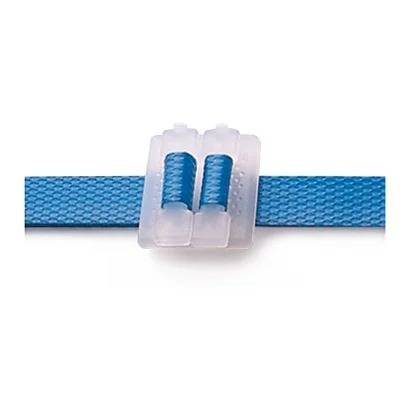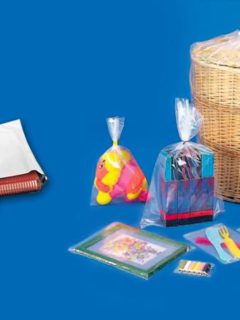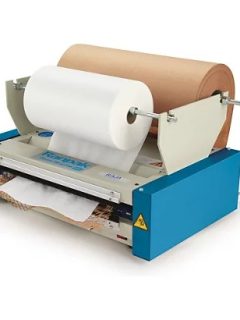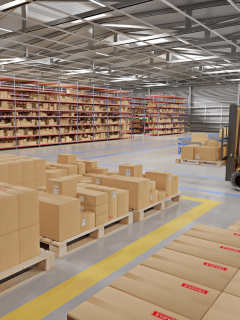Strapping is the key to ensuring a smooth delivery, especially when it comes to long haul transport that tests the correct closure of the package. International shipments, product groupings or large volume packages usually require good strapping and this must be carefully selected according to weight and transport conditions. But how to choose and use strapping correctly?
What is strapping?
Strapping is a strap that allows you to close and protect packages or group them together, preventing the load from moving during transport. It will secure your shipments and pallets by encircling them and thus securing the goods.
Strapping maintains the inviolability of a package, bundles the elements of a pallet for easy transport and strengthens its structure.
The strength and flexibility of strapping is based on the material from which it is made.
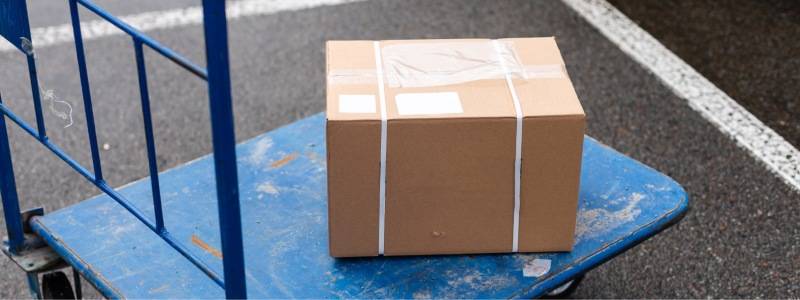
What are the uses of strapping?
Strapping can be used in many ways, for example:
- To close boxes in an optimal way
- Grouping different products together
- Stabilising palletisation
- Bundling papers and newspapers
- As a carrying handle
How to choose strapping?
Before choosing a strap, you have to take into account:
- The product to be protected: packages, newspapers, barrels, boxes, tiles…
- The characteristics, such as weight, load to which it is exposed or its fragility.
- Handling and transport conditions.
- Storage conditions: indoors or outdoors and for how long.
What types of strapping are there?
In our catalogue you will find four types of strapping depending on their material: paper, polypropylene, polyester and textile. Each strap has its own advantages. In the table below you can compare the different types:
| Material | Applications | Characteristics |
Paper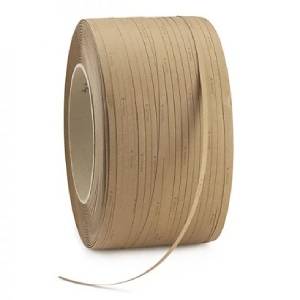 | – For very light loads. – For short term use (indoor) – For manual or mechanical strapping | – Resistance < 55 kg – EcoResponsible: made of 100% recyclable material. |
Polypropylene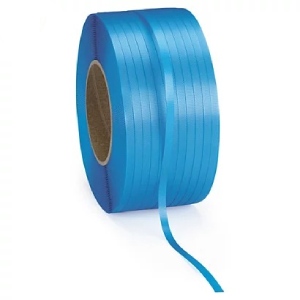 | – For light loads – For short time use (indoor) – For manual or mechanical strapping | – Strength < 245 kg – Surface: embossed appearance – Most elastic |
Polyester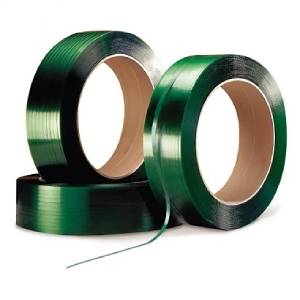 | – For heavy loads – For prolonged use (indoor and outdoor) – For manual or mechanical strapping | – Strength < 534 kg – Surface: embossed appearance – Resists sharp edges |
Textile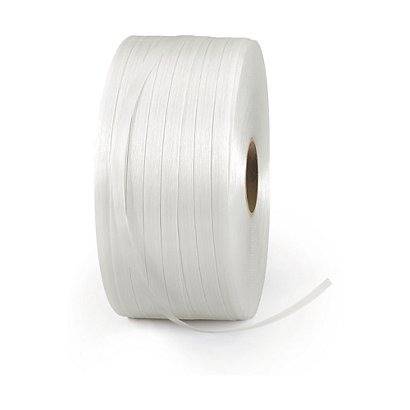 | – For very heavy or fragile loads – For prolonged use (indoor and outdoor) – For manual strapping | – Strength < 820 kg – Surface: smooth – Resists sharp edges |
1. Paper strapping
Kraft paper strapping is the environmentally friendly alternative to traditional plastic strapping and a novelty in our catalogue.

- Average strength: Up to 55 kg.
- Storage: Indoor and short term use.
- Suitable for light package strapping and short term storage.
- Environmentally friendly, as it is made of 95% paper and 5% vegetable adhesive.
- Excellent presentation for the careful shipping of your packages.
- It is soft and smooth, so it rolls easily onto packages.
- Safe: you can use it without risk, as it does not cut.
- Closure: manual with plastic buckles or mechanised with a strapping machine.
In the following video you will see how you can use paper strapping:
You can also personalise the paper strap with your logo. You can find out how to do this by calling 900 877 022 or by filling in this form.
Common uses of paper strapping
- Palletising light loads
- Short term packaging
- Small packages
2. Polypropylene strapping
Polypropylene strapping is a type of plastic strapping and is the most popular and economical.

- Average strength: Up to 300 kg.
- Storage: Indoor only.
- Suitable for light loads and short term storage.
- Will not deteriorate: Resistant to weathering and temperature variations.
- Flexible and easy to handle: Adapts to the shape of your products without damaging them and allows optimal handling of packages.
- Closure: For manual or machine strapping.
Like paper strapping, you can also customise polypropylene strapping to differentiate your products and reinforce your brand image.
Types of polypropylene strapping
- Polypropylene strapping for hand strapping. The grain of this strap facilitates the placement of steel seals or plastic buckles.
- Polypropylene strapping for manual and/or machine strapping. Designed for perfect assembly by friction or thermo-welding, it can be used with high speed machines.
Common uses of polypropylene plastic strapping
- As additional protection against theft on light packages
- Storage of newspapers or magazines
- To close cardboard boxes under 30 kg
3. Polyester strapping
Polyester strapping is a type of plastic strapping made from recycled materials. It is much stronger than polypropylene strapping, allowing it to withstand heavy, rigid loads such as bricks or steel pipes. It is also an excellent alternative to steel strapping as it is just as flexible and secure.

- Average strength: 360kg.
- Storage: Indoor and outdoor, long lasting.
- Holds tension: Constant tension and elasticity that cushions shocks during handling and transport.
- Resistant: To humidity, UV rays and temperature changes.
- Does not rust or deform during use.
- Closure: Manual.
Common uses of polyester plastic strapping
- Palletising heavy loads
- Strapping of building materials
- Glassware
4. Thread to thread textile strapping
Thread-to-wire textile strapping is a flexible, light and very strong strap, which allows for manual packaging of packages with rigid and angled loads.

- Average strength: Up to 950 kg.
- Storage: UV and moisture resistant, does not deform under pressure, making it perfect for long term storage indoors or outdoors.
- Flexible and manoeuvrable: Won’t damage your products as it adapts to their shape. Very easy to use with peace of mind, as it does not cut or hurt your hands.
- Safe: The strap thread by thread can be divided lengthwise to make a safety knot after the buckle has been placed.
- Fastening: Only manual with tensioner.
- 2 types: Standard or reinforced thread to thread.
Textile strapping threads
- Standard threadMade of polyester yarns, it has a breaking strength of up to 550 kg. Can be used outdoors.
- Reinforced yarn to yarnMade of reinforced polyester yarns, breaking strength up to 890 kg. It can be used outdoors.
Common uses of thread to thread textile strapping
- Heavy and/or fragile loads
- Protruding or pointed objects, such as wood or tiles
- Bundling of steel pipes
Types of strapping machines
1. Manual strapping machine
These are tools that allow strapping to be tensioned manually by means of levers. A simple and economical system, recommended for all those who do not palletise many orders or use the strap to secure some loads. There are different models of manual strapping machines for different materials.
They usually require steel seals and buckles to secure the strapping closures or to prevent loss of tension.
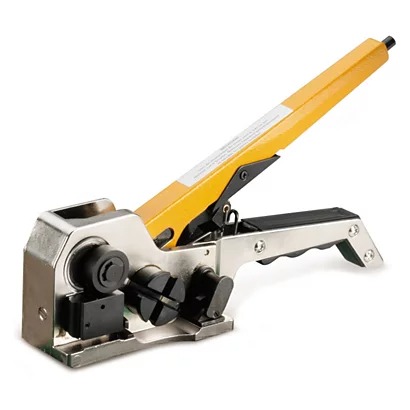
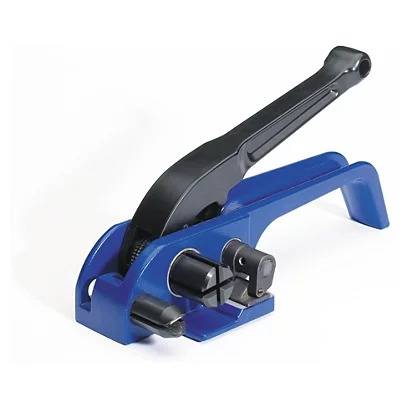
Manual strapping machines for polypropylene and polyester strapping:
Manual strapping machine for textile strapping:
2. Table strapping machine
These are semi-automatic table strapping machines, ideal for easy and fast strapping of small packages, boxes or packages that are not very bulky. Only the strapping is guided manually to ensure its correct position. The system itself is responsible for regulating the tension with a potentiometer and can thus be adapted to all sizes, both fragile products and those requiring high tension.
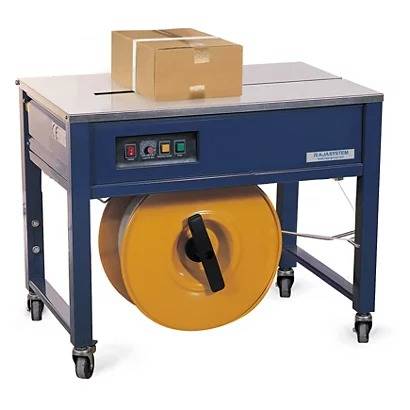
They can perform up to 50 straps per hour, so they are not designed for intensive strapping order picking.
3. Automatic strapping machine
If you do more than 150 strappings in an hour, we recommend automatic strapping machines: they are very useful for intensive strapping use, as they allow about 400 strappings per load. The preparation time is reduced to a minimum, which optimises the preparation of orders, as well as offering perfect tensioning of all types of loads, palletisations, product groupings, etc.
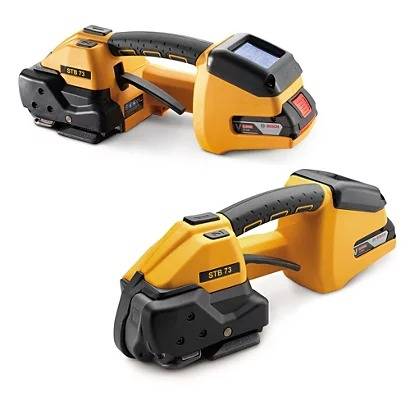
It operates both vertically and horizontally and combines the ability to tension, seal and cut.
Strapping accessories
Among the strapping accessories you can find different accessories to avoid friction and breakage of packaging or to speed up transport and unrolling. All of them are designed to make strapping work easier.
- Plastic protection angle. They protect the packs from strapping rubbing on the corners.
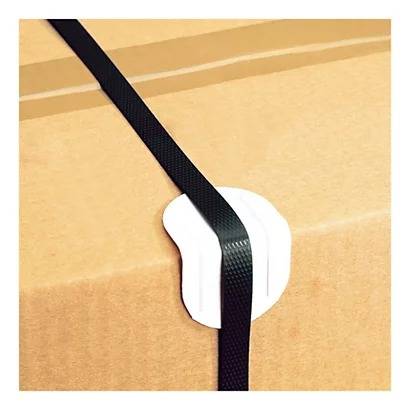
- Cardboard protection brackets. They prevent strap marks, reinforce palletisation and are 100% cardboard.
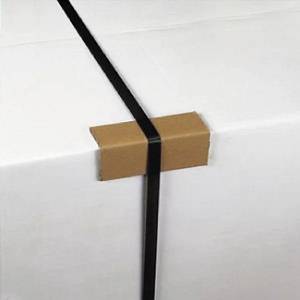
- Corner protectors. Made from 100% recycled cardboard, they give stability, reinforce and protect against breakage caused by strapping.
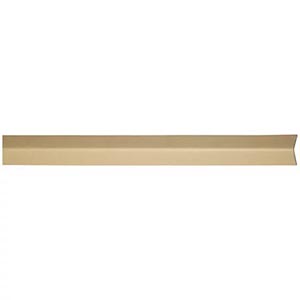
- Steel seals. With high resistance to tighten the strap.
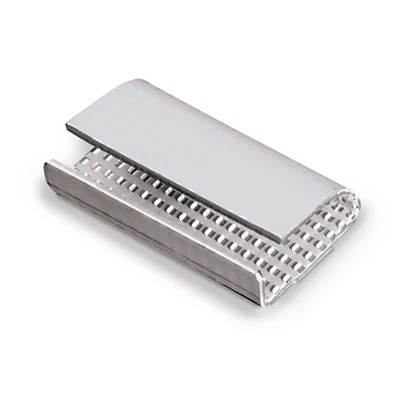
- Trolleys. Very handy, they facilitate the movement and unwinding of the strap. You can choose between multi-purpose, for polypropylene strap or for textile strap.
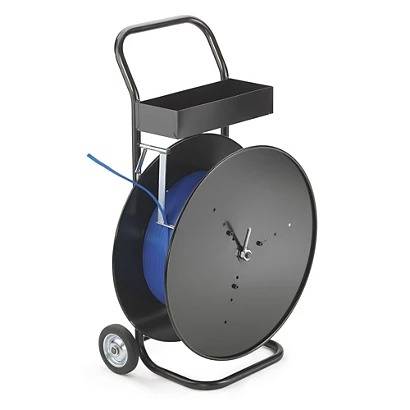
Where can I find the right strap?
Now that you know the different types of strapping, in which cases to use them and how to do it, we remind you that on our website you will find everything you need to protect and bundle your shipments safely. And if you still have any questions about which strapping to use, don’t hesitate to contact RAJA® . We can help you, we assure you!











